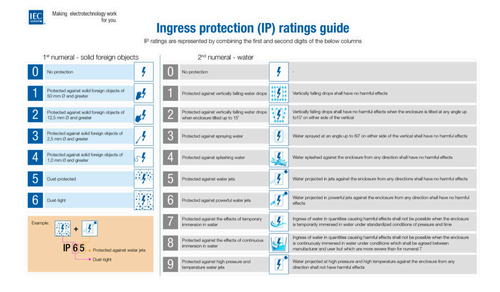If you’ve encountered a product marked IP69K, you’ve come to the right place.
Even those familiar with the IP ratings commonly found on smartphones and headphones might be thrown off by the additional ‘K’ at the end of this rating.
Keep reading to learn everything you need to know about IP69K.
What is IP69K?
IP69K is the highest rating available on the Ingress Protection (IP) scale.
Many tech devices carry IP ratings to signify how resistant they are to solids and liquids. The higher the IP rating is, the more dust and water that device can withstand being exposed to. This makes the IP rating a good indicator of how durable a smartphone, speaker or pair of headphones will be during a rainy morning, heavy gym session or day at the beach.
To understand what IP69K means, we first need to break down the meaning behind each number in the IP scale.


As you can see in the guide from the IEC above, the first digit refers to the amount of solid foreign objects (i.e. dust) a device can withstand, while the second digit indicates the amount of water it can withstand.
The number 6 for dust ingress indicates that the device is dust-tight. This is the highest rating available against solids and the IP68 rating can be found on most high-end smartphones these days.
The number 9 for water ingress means that the device is protected against high-pressure and high-temperature water jets and that water projected at the enclosure from any direction will have no harmful effect on the device. As with solids, this is the highest IP rating available against liquid, indicating high durability.
So, what about the letter ‘K’ at the end of IP69K?
The K means that the device has a specific level of protection from high-pressure jets and steam cleaning. This rating is commonly found in industries like food processing, where equipment needs to be able to withstand high-pressure and temperature washdowns for hygiene reasons. The IP69K label helps to ensure that companies select products that are durable enough to withstand these environments without incurring unwanted damage.

